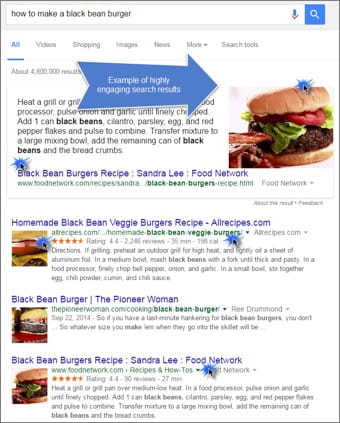Performance marketers have been looking for different ways to work around inaccurate search volume data since Google's Keyword Planner started combining results for similar-yet-different keywords.
Without an active campaign tied to a credit card, organic search marketers only have access to ranges of search volume for keywords (see below) rather than the exact-match details we all had free and open access to in the past.

Because every content optimization exercise inevitably includes keyword search volume (causing the data to skew), it’s challenging to produce an effective data-driven content optimization strategy based solely on keyword search volume.
One Alternative to Consider
iProspect has developed several methods to prioritize content optimization programs that rely on more than just search volume or engagement metrics. Using SEO software from Linkdex, strategists can focus on bridging the gap between the importance of keyword themes and topical analysis. This particular methodology produces greater opportunities to improve visibility for specific content types in universal search results.
For example, let’s look at how our strategy would be designed if we were to prioritize our content optimization tactics based only on ranking monthly search volume from largest to smallest.

As you can see in this example, if we considered only the monthly search volume numbers, our priorities for content creation and promotion would focus on leverage, agile, and frameworks. However, if our ultimate goal is to improve our digital shelf space in universal search results, we should adjust our priorities by flexing our filters, as shown below.

In the second example, we learn we can increase our universal search visibility if we focused on creating videos, images, and quick answer-oriented content for synopsis, iterative, and proposition keyword targets.
By also considering the number of universal result types presented in keyword research from Linkdex, we gain new insight that informs a shift of our digital marketing strategy to prioritize content centered on highly engaging keywords that drive traffic from videos, rich snippets, or image optimizations.
Holistic Approach for Content Optimization
Recipe-based content provides an excellent opportunity to exemplify how our holistic approach to content optimization for universal search results can improve search engine visibility. To optimize a recipe page for highly engaging search results, don’t stop at meta data and header tags. Use advanced tactics to optimize content and reap rewards of improved search results.
- Create an image gallery with optimized images and alternative attributes showing the different steps in the recipe.
- Create a recipe video to show a quick step-by-step process.
- Use HTML tags <ol> and <li> to mark up recipe instructions and make them easier for search engines to index.
- Use structured data like JSON-LD or Schema Markup to structure the code behind your recipe, the recipe instructions, the video, and the webpage.

When these optimizations are implemented, the content is much better positioned to compete successfully against other, highly engaging search results. A single page of content could own both the answer box and position one and also have rich snippets present in the listing. This gives you a lot of page-one organic real estate on any device. Not only will the optimized content own the space that earns the majority of clicks, it will also be delivering exceptional value to users, which is an important factor that will help increase the overall authority of a website over time.

Summing Up
Whatever tools you use for keyword research and rank reporting, be sure to include the number of universal results in your spreadsheets and consideration. Linkdex does this automatically. Find the sweet spot between multiple universal results and a healthy search volume. When similar keywords have the new grouped search volume from Google, let universal result types and quantities be the tiebreakers that drive content optimization priority and tactics. Creating advanced, engaging and holistic content with a solid technical base in structured data will ensure that your content stands out in search results for both users and search engines. Now your content strategy is advanced and adaptive enough to compete successfully in the continually evolving battle for top search results.



